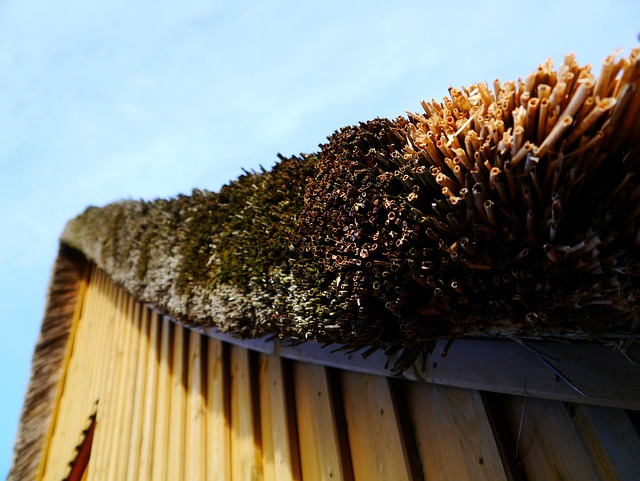Roofs, integral to any building's structure, are significantly affected by local climates. Heavy rainfall accelerates wear and tear, while arid climates lead to accelerated shingle deterioration. Extreme temperatures impact material choices and maintenance routines. Understanding these climate-specific factors is crucial for optimizing roof maintenance schedules, ensuring longevity, and extending lifespans via targeted roof maintenance services. By implementing seasonal maintenance routines and leveraging advanced tech like IoT and data analytics, professionals can detect early signs of damage, create personalized care plans, and reduce costly repairs.
In the diverse landscape of climate, understanding its impact on roofs is key to effective roof maintenance. This article delves into “Understanding Climate’s Impact on Roofs,” exploring how regional weather patterns influence roof health. We provide seasonal inspection and maintenance tips for optimal protection. Learn how to adapt roof maintenance schedules for personalized care. Discover the role of advanced technology in streamlining roof maintenance services, ensuring your rooftop remains a sturdy shield against the elements.
Understanding Climate's Impact on Roofs: A Comprehensive Analysis
Roofs are an essential component of any building, providing protection from the elements and ensuring structural integrity. However, their durability and performance are significantly influenced by the local climate. Understanding how different climates affect roofs is crucial for homeowners and property managers to make informed decisions about roof maintenance services.
In regions with frequent heavy rainfall, roofs face increased wear and tear due to constant exposure to water. This can lead to leaks, moss growth, and structural damage over time. Conversely, arid climates present unique challenges, such as intense sunlight that can cause shingles to deteriorate faster. Extreme temperatures, whether hot or cold, also play a role, impacting the material choices and maintenance routines required for optimal roof health. By considering these climate-specific factors, professionals can tailor maintenance schedules, ensuring roofs remain in top condition and extending their lifespan.
Regional Weather Patterns and Their Influence on Roof Maintenance
Regional weather patterns play a significant role in dictating the frequency and type of roof maintenance required. Diverse climates across different regions lead to varying degrees of wear and tear on roofing structures. For instance, areas prone to heavy snowfall and extreme cold may experience more strain on roofs due to ice damming and snow accumulation. On the other hand, regions with high humidity and regular rainfall can contribute to faster deterioration caused by moisture absorption and fungal growth.
Understanding these patterns is essential for homeowners and businesses alike to schedule roof maintenance services effectively. Regular inspections tailored to local weather conditions can help identify potential issues early on, ensuring timely repairs or replacements. This proactive approach not only extends the lifespan of roofs but also prevents more costly damage down the line.
Season-wise Roof Inspection and Maintenance Tips for Optimal Protection
Maintaining your roof is an essential part of ensuring optimal protection for your home, especially in varying climates. Here are some tailored tips for regular roof inspections and maintenance throughout different seasons.
During spring, a thorough inspection can help identify any winter damage, such as missing shingles or leaks. Regular cleaning of gutters and downspouts is crucial to prevent clogs and water damage. Summer brings warmer temperatures, so it’s important to check for signs of wear and tear, especially in areas exposed to intense sunlight. Fall offers an opportunity to seal any gaps or cracks to keep the elements out, while a winter inspection should focus on ensuring proper drainage systems to melt and direct snowmelt away from your roof, preventing potential ice damage. By following these seasonal maintenance routines, you can extend the lifespan of your roof and avoid costly repairs, with the help of professional roof maintenance services.
Adapting Roof Maintenance Schedules: A Practical Approach
Maintaining your roof is essential, but scheduling it right depends on your climate. In regions with frequent storms and heavy rainfall, regular inspections and repairs are crucial to prevent water damage. Here, bi-monthly or monthly roof maintenance services might be ideal. Conversely, drier climates may only require biannual check-ups, focusing on basic inspections for any signs of wear and tear.
Adapting your roof maintenance schedule is a practical way to ensure longevity and avoid costly repairs. Keep an eye out for local weather patterns and consult with professionals who can offer tailored advice based on your specific climate conditions. This proactive approach will help you maintain a safe, sound roof year-round.
The Role of Advanced Technology in Personalized Roof Care Programs
In today’s digital age, advanced technology plays a pivotal role in revolutionizing roof care programs, especially with tailored maintenance schedules for various climates. Through the integration of IoT (Internet of Things) devices and data analytics, roofing professionals can now access real-time insights into roof conditions. This enables them to create personalized care plans that consider factors like local weather patterns, material types, and age of the roof. For instance, smart sensors can detect early signs of damage, such as leaks or deterioration, allowing for prompt action before issues escalate.
By leveraging these technologies, roof maintenance services become more efficient and effective. Specialized software can analyze historical data to predict potential problems and schedule preventive maintenance accordingly. This proactive approach not only extends the lifespan of roofs but also reduces costs for homeowners and property managers in the long run. Moreover, advanced technology ensures that every roof receives precisely what it needs, when it needs it, creating a more sustainable and resilient roofing infrastructure.
In conclusion, tailoring roof maintenance schedules to your specific climate is a proactive approach that ensures optimal protection for your property. By understanding the impact of regional weather patterns and utilizing advanced technology, you can implement personalized care programs that prevent costly repairs. Regular, season-wise inspections coupled with adaptive maintenance schedules make roof maintenance services more efficient and effective, safeguarding your investment against the elements.
